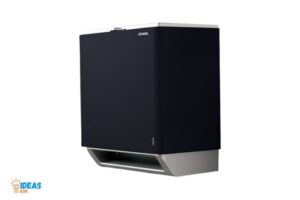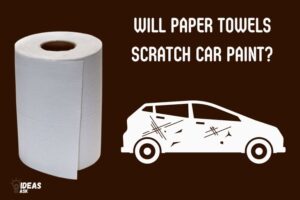When was Bounty Paper Towels Invented? 1965 !
Bounty paper towels were invented in 1965.
Bounty paper towels were developed by Procter & Gamble (P&G) in response to the growing demand for a more absorbent and strong household cleaning product.
They were first introduced to the market in 1965 as “Charmin Towels” and later rebranded as “Bounty” in 1974. The product quickly gained popularity due to its superior absorbency, durability, and ability to clean up messes more effectively than traditional cloth towels.
Bounty paper towels have become a household staple due to their impressive absorbency and durability.
Their innovative design and technology revolutionized the paper towel industry by providing consumers with a more effective solution for cleaning spills and messes.
Today, Bounty offers a variety of paper towel options, including select-a-size sheets and environmentally friendly alternatives, allowing customers to choose the perfect option for their cleaning needs.
Invention of Bounty Paper Towels Detail Chart
| Invention Year | Invented By | Company | Product Name |
|---|---|---|---|
| 1965 | Harold Titus | Procter & Gamble | Bounty Paper Towels |
Key Takeaway

Five Facts About Bounty Paper Towels
The Origins Of Paper Towels And Their Early Uses
When was bounty paper towels invented: the origins of paper towels and their early uses
Paper towels are one of the most common cleaning tools today, but its history dates back to ancient times.
Let’s explore how paper towels evolved from tissue paper, and how they eventually replaced rags as the go-to cleaning tool.
The Invention Of Paper And Its Early Use In Cleanliness
- Paper was first invented in ancient china, around 105 ad, by the han dynasty.
- The spread of papermaking reached japan by the 7th century, and it wasn’t until the 14th century that it came to europe.
- In the early days, paper was used for various purposes from wrapping to writing.
- The use of paper for cleaning surfaces is not well documented, but it was commonly used to clean ink off surfaces.
The Emergence Of Tissue Paper And Its Use As A Personal Hygiene Product
- In the 14th century, the chinese started using tissue paper as a personal hygiene product, especially as toilet paper.
- The paper was primarily made from rice, and it wasn’t until the 19th century that the process of making tissue paper evolved.
- By the 1920s, the production of tissue paper made it widely available and affordable for the general public.
The Introduction Of Paper Towels And Their Advantages Over Rags
- In the early 20th century, paper towels were introduced as a more hygienic and convenient alternative to rags.
- Paper towels gained popularity in public restrooms, and by the 1930s, paper towels were being used in factories and kitchens.
- The advantages of paper towels over rags included being more absorbent, disposable and easier to store.
Today, paper towels are an essential cleaning and hygiene product used daily by millions of people worldwide. From their humble beginnings as tissue paper, to their evolution as a cleaning tool, paper towels have come a long way.
The Development Of Modern Paper Towels
When it comes to cleaning spills or wiping surfaces, paper towels are frequently the go-to solution. However, have you ever asked yourself how the development of modern paper towels came to be?
The Role Of Scott Paper Company In The Development Of Paper Towels
Scott paper company is a significant contributor to the history of paper towel production. Arthur scott, the owner of the company, was the one who came up with the concept of paper towels.
In 1907, scott paper company introduced the first mass-produced disposable paper towel to the market. This was a revolutionary achievement that paved the way for modern-day paper towels.
The Introduction Of Multi-Fold Paper Towels In The 1940S
The multi-fold paper towel, frequently seen in public restrooms, was launched in the 1940s. This invention facilitated the wide-spread use of paper towels in commercial and institutional settings.
Multi-fold paper towels were made by taking a large piece of paper and folding it multiple times, allowing for smaller, more convenient sections to be ripped off as needed. These paper towels are an inexpensive solution for drying hands in restrooms.
Some of the benefits of multi-fold paper towels include:
- They are simple to store and restock.
- They can control the amount of paper used.
- They are more hygienic than having a shared towel.
The Introduction Of Single-Fold Paper Towels In The 1950S
Scott paper company introduced single-fold paper towels to the supermarket in the 1950s. Like the multi-fold paper towel, single-fold paper towels were made from folding a large piece of paper, but in this case, it was only folded once.
The single-fold paper towel’s arrival in the 1950s allowed for the creation of a simple and cost-effective solution for people to use in their homes, leading to the development of the modern-day kitchen paper towel.
Some of the benefits of single-fold paper towels include:
- They are simpler to store and restock.
- They can control the amount of paper used.
- They are a more hygienic solution as they are disposable and can be used only once.
The evolution of paper towels was undeniably revolutionary, transforming the way people clean and making life more convenient.
Thanks to this evolution, there are now many types of paper towels to choose from, as well as different sizes and absorbency levels, making it simpler than ever to clean up messes quickly and efficiently.
The Arrival Of Bounty Paper Towels
Bounty paper towels have been a household name since their invention in the 1960s. Unlike traditional paper towels that easily rip and tear, bounty offered a strong, absorbent alternative to make cleaning up a breeze. In this section, we’ll explore the history of bounty paper towels and how they’ve evolved over time.
The Birth Of The Pulp And Paper Research Laboratory At Procter & Gamble
In 1952, procter & gamble established the pulp and paper research laboratory to explore new methods of creating stronger and more absorbent paper products.
The laboratory’s primary goal was to develop a paper towel that could hold more liquid and withstand tougher cleaning jobs. After years of research and experimentation, bounty paper towels were born in the early 1960s.
Key points to note about the pulp and paper research laboratory include:
- Procter & gamble established the laboratory in 1952 to explore new methods of creating stronger and more absorbent paper products
- The laboratory’s primary focus was developing a more durable paper towel
- The laboratory’s years of research and experimentation led to the creation of bounty paper towels in the early 1960s
The Development Of Bounty Paper Towels In The 1960S
Bounty paper towels were first introduced to the american market in 1965 as the “two-ply napkin. ” The product quickly gained popularity for being strong, absorbent, and long-lasting, thanks to its unique design.
Unlike other paper towels on the market at the time, bounty was made of a blend of pulp and synthetic fibers, strengthening the product’s durability and absorbency.
Key points to note about the development of bounty paper towels in the 1960s include:
- Bounty was first introduced to the american market in 1965 as the “two-ply napkin”
- The product gained popularity for its strength, absorbency, and durability
- The unique blend of pulp and synthetic fibers made bounty stand out from other paper towels on the market
The Introduction Of Select-A-Size Bounty Paper Towels In The 1980S
As the years went on, bounty continued to improve its product line to cater to its customers’ needs. In the 1980s, bounty introduced select-a-size paper towels to the market.
These towels allowed users to choose the amount of paper they needed, meaning less waste and a more cost-effective option for consumers.
Since then, the company has continued to innovate and improve its product line, further solidifying itself as a household name.
Key points to note about the introduction of select-a-size bounty paper towels in the 1980s include:
- Select-a-size paper towels were introduced to the market in the 1980s
- These towels allowed users to choose the amount of paper they needed, reducing waste and offering customers a more cost-effective option
- Bounty continues to innovate and improve its product line, remaining a household name in the paper towel industry.
The Advantages And Disadvantages Of Using Bounty Paper Towels
When it comes to cleaning up spills or messes, paper towels are easily one of the most common household items used.
However, not all paper towels are created equal. Bounty paper towels, a brand by procter & gamble, is known for its durability and absorbency.
But when was bounty paper towels invented, and what are the advantages and disadvantages of using them? Let’s find out.
Plain paragraph: bounty paper towels are a popular choice for many households due to their durability and absorbency. However, there are also some downsides to consider.
- Advantages:
- Strong and durable, making them useful for tough cleaning jobs
- Highly absorbent, making them effective at cleaning up spills and messes
- Come in different sizes and thicknesses, allowing for customized usage
- Widely available and reasonably priced
- Disadvantages:
- Not environmentally friendly, as they contribute to deforestation and waste
- Single-use, leading to increased consumption and waste
- May not be as cost-effective as reusable cleaning cloths or other brands of paper towels
The Environmental Impact Of Paper Towels And Ways To Reduce Them
- The production of paper towels contributes to deforestation and greenhouse gas emissions
- It takes significant resources, such as water and energy, to manufacture and transport paper towels
- Paper towels cannot be recycled if they have come into contact with food waste or other contaminants
Ways to reduce the environmental impact of paper towels include:
- Using reusable cleaning cloths instead of disposable products
- Opting for brands that use sustainable and responsibly sourced materials
- Using fewer paper towels by wringing them out and using both sides
The Cost Effectiveness Of Bounty Paper Towels Compared To Other Brands
Plain paragraph: while bounty paper towels are reasonably priced, they may not be the most cost-effective option for all households. Cheaper brands and reusable cleaning cloths may be more cost-efficient in the long run.
- Bounty paper towels are competitively priced compared to other brands
- However, cheaper brands may still be more cost-effective, especially if they’re used sparingly or with a higher level of effectiveness
- Reusable cleaning cloths, while requiring an upfront investment, may be more cost-effective in the long run due to their reusability
The Effectiveness Of Bounty Paper Towels In Cleaning And Absorbing Liquids
- Bounty paper towels are known for their strength and durability, making them effective at cleaning up tough messes
- They are highly absorbent, meaning they can soak up liquids quickly and effectively
- The thickness and size of the paper towels can impact their effectiveness, with thicker and larger towels being more useful for larger messes
- Bounty paper towels are versatile and can be used for a variety of cleaning tasks, including wiping down surfaces, cleaning up spills, and drying dishes.
Bounty paper towels may be a popular choice due to their absorbency and durability, but it’s important to consider their environmental impact and whether they’re the most cost-effective option for your household.
By weighing the advantages and disadvantages, we can make informed decisions about our paper towel usage and reduce our environmental impact while retaining the convenience of disposable cleaning products.
FAQ On Bounty Paper Towels
What Is Bounty Paper Towel And Its History?
Bounty is a brand of paper towel that was invented in the usa in 1965. It is known for its durability and absorbency.
How Are Bounty Paper Towels Made?
Bounty paper towels are made from virgin wood pulp, which is boiled, mixed with water, and pressed into sheets. The sheets are then cut and packaged.
What Are The Features Of Bounty Paper Towel?
Bounty paper towels are known for their super absorbency and strength. Their unique design allows them to quickly soak up spills and messes.
How Eco-Friendly Are Bounty Paper Towels?
Bounty paper towels are not considered eco-friendly as they are made from virgin wood pulp. However, the brand has made efforts to reduce waste and use of resources in their manufacturing process.
Conclusion
Finally, it’s clear that the invention of bounty paper towels has impacted household cleaning and has made life simpler and easier for many people worldwide. The brand has been around for over 60 years and has continually adapted to the changing needs of its consumers.
With its improvements over the years, such as the quick-absorbing quality, added durability, and now eco-friendly packaging, bounty remains a household name when it comes to paper towels. The invention of bounty showed the importance of investing in simple yet essential products that make our daily lives more manageable, and it’s fascinating to see how far the humble paper towel has come.
As a consumer, it’s crucial to invest in quality products that we can trust and rely on. Bounty paper towels have indeed made life a little simpler while keeping our homes clean and tidy.






